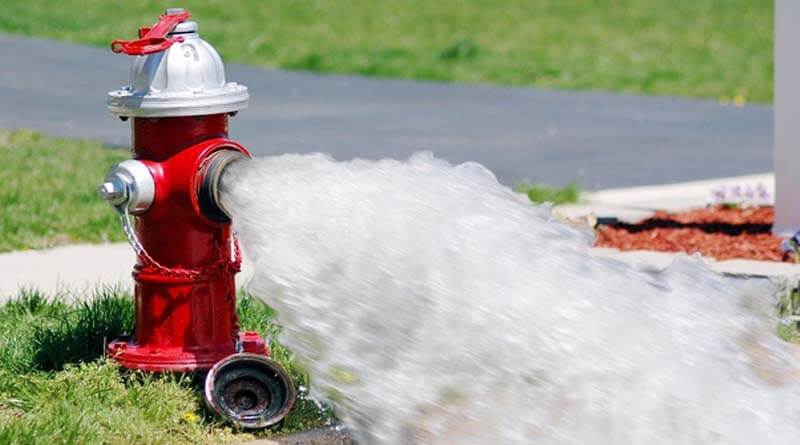Fast-flowing water from a hydrant is crucial to a fire department’s success in dousing flames on a burning building and saving property and lives.
Firefighters are highly trained. Likewise, their trucks, hoses, and other equipment must be in prime condition and immediately usable.
Hydrants are the main water suppliers for fire departments in cities and many other communities. Checking water pressure levels with fire hydrant flow test practices is key to establishing a reliable, working fire suppression system.
Under Pressure
A hydrant, sometimes called a “fireplug,” is connected to pipes in a main water supply system.
Typically, a hydrant stands on a sidewalk like a silent sentry until firefighters connect a hose to it. Then, after the hydrant valve is opened, crews can spray the pressurized water onto a fire. The rate of water flow will impact firefighters’ effectiveness in getting the water to reach and put out flames.
For many years, a hydrant may be unused to fight fires, but it must be ready for firefighting service every day.
Maintenance Plans
Municipalities, utilities, and organizations have various practices and testing schedules. To assure best practices and properly functioning equipment, communities with hydrants would be well-advised to seek a professional service or supplier that deals with fire hydrant testing and inspections.
The National Fire Protection Association recommends that flow testing of public fire hydrants be conducted every five years. Flushing hydrants should be done at least annually, the organization said in the NFPA 291 “Recommended Practice for Fire Flow Testing and Marking of Hydrants.”
Exterior Damages
Hydrants often painted red or yellow, should be checked for vandalism. “No parking” signs are posted near hydrants to maintain accessibility by fire crews, but that doesn’t protect them from being hit by automobiles.
Broken or disabled fire hydrants can impede firefighting efforts. In such instances, crews may use tankers to shuttle water from another area. That time-consuming step could result in losses of property and life.
In areas with harsh winters, fire crews sometimes have to cope with frozen equipment, including fire hydrants. Spring is a good time to check hydrants for weather-related damages.
Reliable Equipment
Crews go through extensive physical training to learn firefighting skills. They study how fire travels and how to work as a team. They practice skills in simulated emergencies. That practice and the maintenance of equipment are avenues to readiness.
Fire hydrants may be owned publicly or privately. Regardless of ownership, hydrants must be inspected, tested, and maintained to be effective as part of a firefighting system that is ready for action when the alarm rings.









